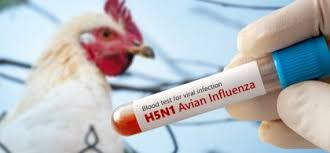Bird Flu's Alarming Leap: From Birds to Cows—and Now to Humans
- Natasha L
- Apr 22
- 3 min read

In early 2024, the discovery that H5N1 bird flu had jumped from wild birds to cows stunned virologists. In just over a year, the virus has surged through America’s dairy herds and poultry flocks, crossed into other mammals—including humans—and infected 70 Americans. One person has died.
Long considered a potential pandemic candidate, the virus is now testing our readiness. Veterinarians and scientists told 60 Minutes that the federal response was slow and fractured: the Biden administration delayed early action, and the Trump administration has since laid off more than a hundred key public health scientists.
Dr. Kay Russo, a Colorado veterinarian, says we're running out of time. She was called in when H5N1 struck a dairy farm last summer, costing the operation around $400,000. Most cows recovered, but the outbreak’s source remains unclear. Milking equipment is a leading suspect—auto-milkers may harbor the virus between uses. Several farm workers have also fallen ill.
“It’s like being blindfolded, handed a stick, and sent into a gunfight,” Russo said. “And we’re losing.”
The first signs emerged in Texas: cows with high fevers, dry udders, coughing, drooling, and lethargy. Dead birds littered the farms. Cats showed neurological symptoms. Workers reported flu-like illness. Russo feared the worst—and tests confirmed it: bird flu had made the leap to cattle.
Historically, H5N1 has a human mortality rate around 50%. “We all looked at each other and asked: what does this mean? It was a scary place to be,” Russo recalled.
Despite growing alarm, action lagged. It took a month for the USDA to mandate interstate cattle testing. A raw milk testing program wasn’t launched for 10 months. Today, testing protocols vary wildly by state—some weekly, others barely at all.

Dr. Kamran Khan, an infectious disease specialist in Toronto whose company, BlueDot, helped detect COVID’s early spread, called H5N1 “a serious threat to humanity.” He showed how rapidly the virus has spread across cattle and poultry nationwide. Human infections have spiked—most mild, but increasingly disconnected from known animal exposure. One girl in Mexico died just two weeks ago.

“This virus is evolving in real time,” Khan warned. “It’s Darwinian. Every new infection gives it another chance to become more transmissible, more deadly, or resistant to antivirals.”
A recent study found antibodies to H5N1 in 7% of dairy workers—suggesting many infections are going undetected. Still, the CDC maintains the risk to the general public is low.

There is a bird flu vaccine, but it remains unlicensed by the FDA. Moderna has developed a new version, but final funding has been paused. Vaccines for poultry exist but aren’t used—vaccinated birds are barred from export by many trade partners. A hopeful development: the USDA's milk-testing initiative, led by Dr. Keith Poulsen in Wisconsin, which has begun to slow transmission in some states.

Yet challenges persist. Nearly half of U.S. farmworkers are undocumented and may avoid testing. “If we’re not actively looking, we’ll miss early signs of human-to-human spread,” said Dr. Angela Rasmussen, a virologist based in Canada.

Rasmussen, who was briefed by the Biden administration in 2024, said early misjudgments gave the virus room to spread. Under the current administration, many CDC scientists have been fired, and internal communications reportedly restricted.
“I’m having encrypted conversations with colleagues I used to just email,” she said. “It’s absurd.”
The virus continues to infect a growing range of mammals—foxes, goats, pigs, cats, raccoons, even rats. Each new host is another roll of the evolutionary dice.

“If this spreads to children, I’ll scorch the earth,” Russo said. “As a mother, a vet, a scientist—I’m begging you: trust us. We’re doing everything we can to stop this before it’s too late.”




Comments